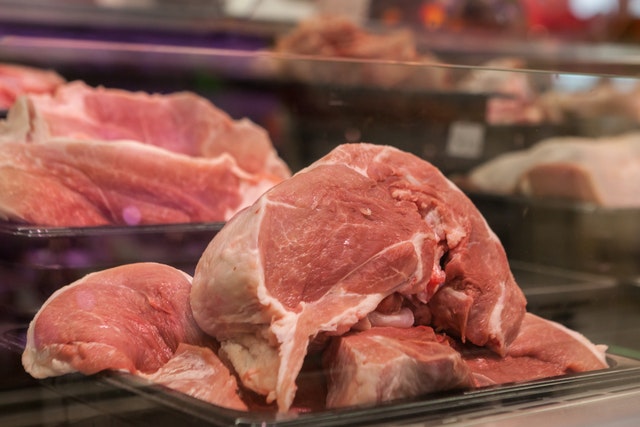In June, the USDA Food Safety and Inspection Services (FSIS) announced that it was rethinking its approach to Salmonella in poultry based on a review of data from 2015 to 2020 that showed a higher than anticipated reduction in Salmonella-contaminated chicken parts but no corresponding decrease in Salmonella-related illnesses attributable to poultry products.
Part of the new approach, shared in July, is the integration of Salmonella quantification testing in FSIS regional laboratories. The agency is now using GENE-UP QUANT Salmonella assay from bioMérieux, a non-enrichment quantification diagnostic tool for Salmonella.
We spoke with Miguel Villa, vice president of industrial applications for the Americas at bioMérieux to learn more about the new assay and how quantification methods may better serve public health initiatives.
Food Safety Tech (FST): How did your work with USDA FSIS come about?
Villa: bioMerieux is a French company with many, many years in the field of in vitro diagnostics. The background of the company is in human health care and life sciences. The legacy of this group is in vaccines going back to the time of Louis Pasteur. In fact, the founder of the group was a disciple of Louis Pasteur.
For the past 30 years, we have also been designing and manufacturing diagnostic tools and tests for the pharmaceutical and food industries. And for the past three years we—and other companies—have been in dialogue with the USDA FSIS and the FDA about the use of quantification for food safety and food testing for the benefit of public health.
There was discussion about the fact that, after years and years of better controls, increased testing and an increasing regulatory framework around food safety the level of foodborne illness that we continue to see is not where the regulators or the public want it to be. Based on that, we have had discussions about what are the next steps and how can we take this further to reduce diseases that are coming from food sources. There is a lot of focus on animal protein products, and one of the main contaminants has been Salmonella.
FST: What are some of the concerns or limitations of the current or traditional standards of testing?
Villa: The regulations now are focused on the presence or absence of Salmonella, and the regulators have accepted recently that we need to do more. One of the things that has been discussed quite a bit is quantification—not only do we want to know whether Salmonella is present, we want to know how much is present. This is what the GENE-UP QUANT Salmonella assay measures.
How this works is, whenever the FSIS gets a particular sample that is positive, they will use the assay to check how much Salmonella there is to get a better understanding of what they’re dealing with in terms of risk to public health.
FST: This is a non-enrichment detection method, why is that important?
Villa: True quantification can only come from the original sample. If you do something to that sample to stimulate growth, the organism typically does not grow in a linear fashion or you might be promoting limits of growth in that medium. So, the picture you get after enrichment is not exactly what is in the original sample, which is what you’re trying to understand.
FST: Is the assay quantifying only the density of Salmonella in the sample or is it also looking at serotypes?
Villa: Only the quantity. We are not looking at serotypes at this stage, but we are involved in the development of serotyping tools based on what we see coming down the road.
FST: Is the technology behind the GENE UP QUANT assay a new technology or new to the food safety industry?
Villa: GENE UP is a PCR (polymerase chain reaction) test, and PCR has been around for more than 20 years, so the tool itself is not new. What is new—or what is recent—are the methods that we are using to develop tests. They are more accurate and precise. And they are able to use mathematical modeling to correlate the things that you see in the sample, quantify them and also assess them accurately from a sample that is not enriched.
In the future, we will use the same techniques to develop rapid, accessible tools to identify specific serotypes.
FST: The USDA FSIS has brought this testing into its regional laboratories, are food manufacturers and processors also using these in their facilities? Should they be thinking about that?
Villa: Now that it is public knowledge that the FSIS is using this testing and performing Salmonella quantification, they are educating the market about why they’re doing this. As a result, we are beginning to receive inquiries from clients of ours about the test. It is not a mandate at this stage, but for their own risk management processes, many companies will likely start incorporating it.
FST: What is the benefit of quantification? Why is it important to regulators and food safety professionals to know not only if Salmonella is present, but how much?
Villa: The industry has been very interested in moving away from presence/absence testing only for a while, because many people think that not all Salmonella is pathogenic. In addition, we need to find better ways to gauge risk but at the same time not be as costly or as shotgun in our approach.
Quantification was recognized several years ago as a potential way for us to start correlating clinical outcomes—or the lack of them—with certain levels of Salmonella. We think there will come a time where people will start to agree that one of the data points you need as part of your risk assessment to make decisions at an industrial level is how much Salmonella is in the original sample. If it’s below a certain level, it may not be considered as risky.
In the future, by combining quantification and serotyping, we believe that we will be able to give manufacturers very accurate readings with all the information needed to make good decisions and good calls about their products.







